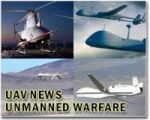South Korea has selected L3Harris Technologies to develop and integrate mission systems for its next-generation Airborne Early Warning and Control (AEW&C) aircraft fleet. The contract marks a significant milestone in the Republic of Korea Air Force’s (ROKAF) efforts to modernize its intelligence, surveillance, and reconnaissance (ISR) capabilities amid growing regional threats.
Contract Overview and Strategic Context
On October 21, 2025, L3Harris announced it had been awarded a multi-year contract by South Korea’s Defense Acquisition Program Administration (DAPA) to supply advanced mission systems for four new AEW&C aircraft. The platforms will be based on the Bombardier Global 6500 business jet airframe—a high-performance long-range aircraft well-suited for ISR roles due to its endurance and altitude ceiling.
The program is part of South Korea’s broader “AEW-II” initiative aimed at expanding and diversifying its airborne early warning capabilities beyond the current fleet of four Boeing E-737 Peace Eye aircraft. With tensions rising in Northeast Asia—particularly due to North Korean missile launches and Chinese air activity near the Korean Peninsula—the ROKAF seeks improved situational awareness and command-and-control resilience.
While financial terms were not disclosed publicly at press time, estimates based on comparable programs suggest a total value exceeding $1 billion USD over the life of the program. According to DAPA statements reviewed by MiliVox from earlier this year, initial operational capability (IOC) is targeted for 2027.
L3Harris Role: Mission System Integration
L3Harris will serve as the prime system integrator for all onboard mission electronics. This includes:
- Multi-mode active electronically scanned array (AESA) radar
- Electronic support measures (ESM)/ELINT suite
- Secure datalinks compatible with Link-16/STANAG protocols
- Battlespace management consoles with AI-assisted threat analysis
- C4ISR integration with ground-based command centers
The company has prior experience integrating similar systems on U.S. Navy P-8 Poseidon variants as well as NATO-compatible ISR platforms. In this case, L3Harris will likely adapt its scalable open architecture design used in other C4ISR programs such as Compass Call EC-37B or MC-55A Peregrine.
A key differentiator is expected to be modularity—allowing future upgrades such as passive RF geolocation or SIGINT payloads without major redesigns. Given South Korea’s emphasis on indigenous defense technology development under its “Defense Reform 2.0” roadmap, L3Harris may also partner with local firms like LIG Nex1 or Hanwha Systems for subsystem production or sustainment.
The Platform: Bombardier Global 6500 ISR Conversion
The choice of Bombardier’s Global 6500 jet reflects a global trend toward using business jet-derived platforms for AEW&C missions—offering lower operating costs compared to traditional airliner-based solutions like E-737 or E-767.
The Global 6500 features:
- Range exceeding 12,200 km (6,600+ nautical miles)
- Cruise speed up to Mach 0.90 with high-altitude performance (up to FL510)
- Low observable acoustic/IR signature compared to larger jets
This makes it ideal for persistent patrols over maritime zones or contested airspace near North Korean borders or disputed EEZ areas in the Yellow Sea/East Sea region. Notably, Sweden’s Saab Erieye ER system has also been integrated onto similar platforms like the GlobalEye based on Bombardier’s Global series.
Regional Implications and Capability Gaps Addressed
The addition of four new AEW&C aircraft will significantly expand ROKAF’s coverage radius and redundancy. Currently reliant solely on four Peace Eye E-737s acquired between 2011–2012 under Project Peace Eye (~$1.6 billion), South Korea faces limitations in sustained round-the-clock coverage during crises or multi-front scenarios.
The new fleet will allow:
- Distributed basing across multiple airfields including Cheongju AB and Gimhae AB
- Simultaneous monitoring of both western maritime approaches (Yellow Sea) and eastern corridors near Japan/Dokdo area
- Improved cueing for Patriot PAC-3/KAMD missile defense batteries via real-time target data relay
- Enhanced interoperability with U.S., Japanese forces via Link-16/Link-K networks during joint operations/exercises like Vigilant Storm or Freedom Shield
This move also aligns with Seoul’s ongoing investment in space-based ISR assets such as reconnaissance satellites under Project “425,” creating a layered sensor-to-shooter kill chain architecture by late decade.
L3Harris Expansion in Asia-Pacific Defense Market
This contract solidifies L3Harris’ growing footprint in Asia-Pacific defense modernization programs. In recent years it has supplied tactical radios to Australia under LAND200 Phase II; supported Japan’s F-X fighter development via electronic warfare components; and collaborated with Taiwan on C4ISR upgrades despite political sensitivities.
The South Korean deal may serve as a springboard into other regional competitions—such as potential AEW replacements in Thailand or Indonesia—or even NATO-aligned nations seeking cost-effective alternatives to Boeing E-7 Wedgetail platforms.
Outlook: Timeline and Industry Collaboration Ahead
DAPA expects first delivery by late Q4 of FY2026 following flight testing phases likely conducted at L3Harris’ Waco facility in Texas before final handover at Sacheon Aerospace Industrial Complex in South Gyeongsang Province.
A key question remains whether Seoul will pursue follow-on buys beyond the initial four units depending on operational feedback post-deployment. Additionally, observers are watching whether indigenous radar developers like Hanwha Systems might eventually replace imported AESA modules under future spiral upgrades—a move that would mirror trends seen in KF-21 Boramae fighter avionics localization efforts.
If successful, this program could become a model case study for hybrid Western-indigenous ISR platform development tailored specifically for Indo-Pacific threat environments—a blend increasingly favored by mid-tier powers balancing capability needs with budget constraints.









